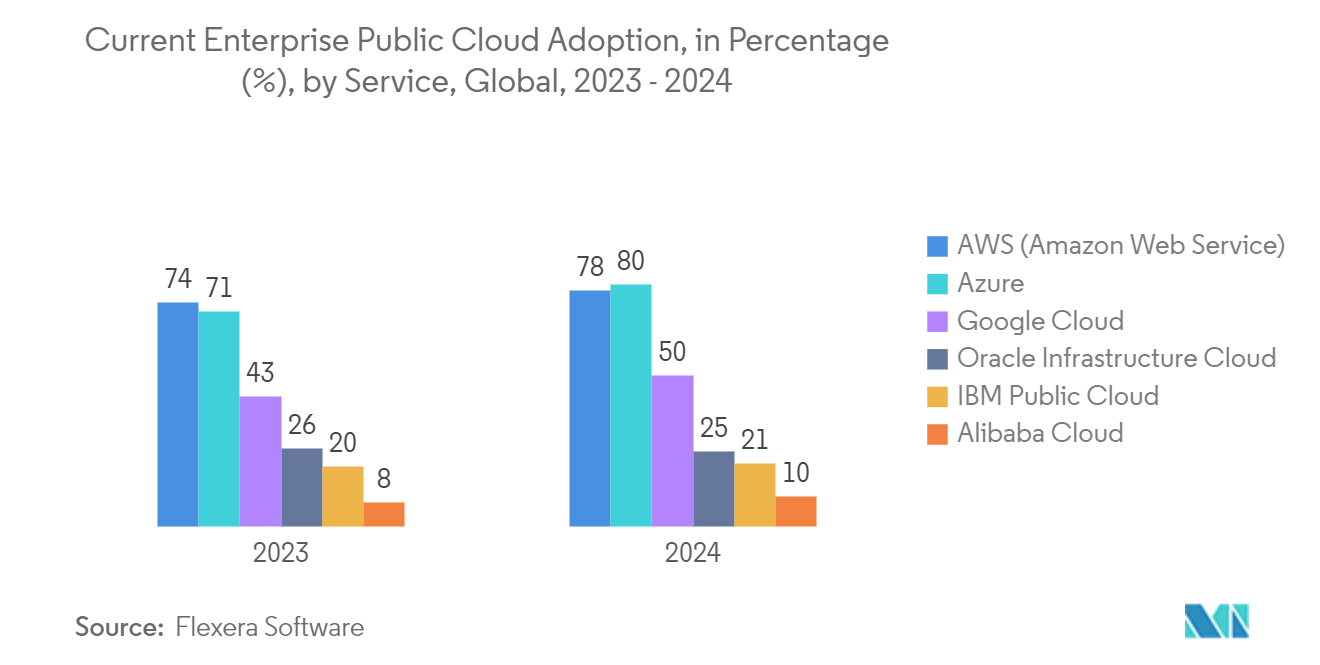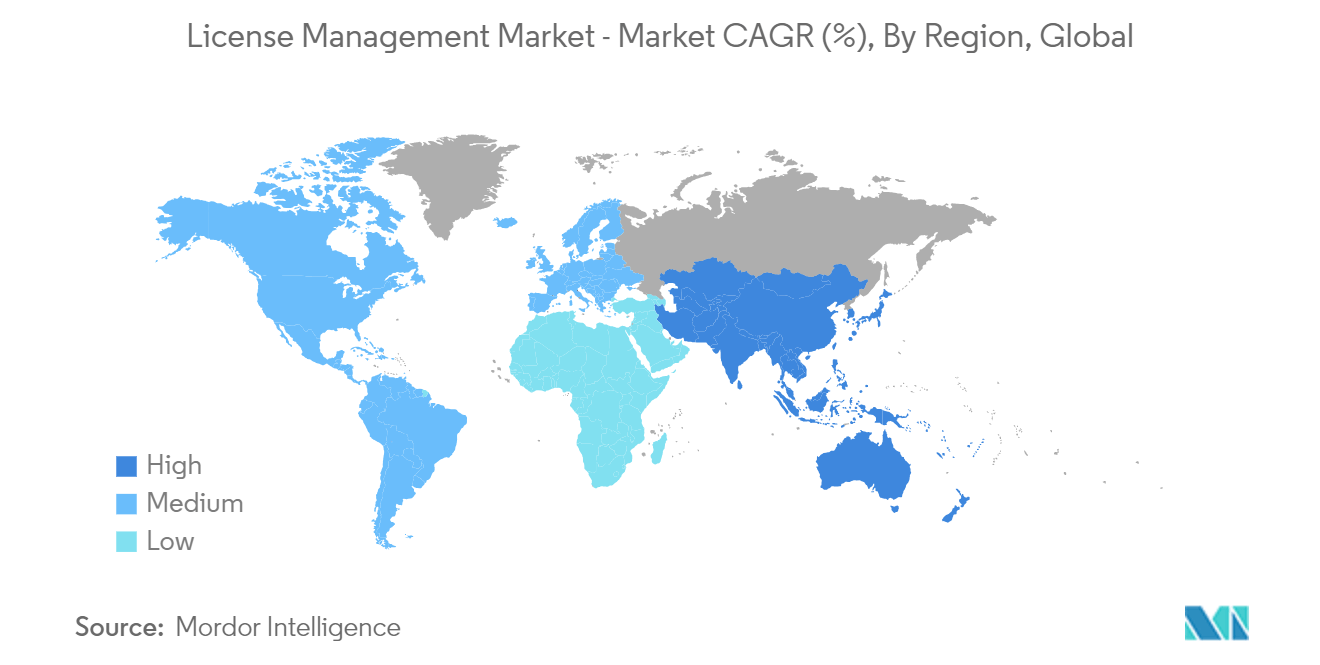Market Trends of License Management Industry
Software Component Segment is Expected to Hold Significant Market Share
- The software component segment is expected to record significant growth, driven by the rising need for companies to manage their software assets efficiently. This segment centers on solutions that assist businesses in adhering to licensing agreements, controlling costs, optimizing software utilization, and steering clear of penalties for license violations. The growing trend towards cloud services, subscription-based licensing, and the escalating complexity of software usage have further fueled the demand for software-centric license management solutions.
- Across diverse industries, organizations are increasingly automating operations and embracing advanced software tools. For example, a 2023 survey by The Innovation Group, a business services company, revealed that nearly 50% of managers reported that their companies were in the midst of a digital transformation. In addition, about 27% stated that they had already completed the transformation. Notably, only 5% of companies indicated that they neither started nor planned to pursue digital transformation.
- As automation becomes more prevalent, the demand for software licenses surges, complicating their management. Automated license management tools empower businesses to efficiently track software assets efficiently, ensuring optimal utilization. With enterprises broadening their software portfolios, manual license management becomes a challenge. Embracing automation streamlines software usage optimizes costs, and curbs wastage.
- Frequent license audits by software vendors have heightened scrutiny on companies. This push for compliance, to sidestep penalties from improper software use, has spurred demand for robust license management systems. Enterprises are actively pursuing solutions that guarantee audit readiness, helping them dodge unforeseen financial penalties.
- As the costs of non-compliance escalate and audits grow more frequent, the value of software that streamlines these processes becomes evident, alleviating both financial risks and operational burdens.
- Cloud computing has revolutionized software licensing. For example, Flexera Software reports that in 2024, 80% of enterprises are turning to Microsoft Azure for their public cloud needs. Hyperscalers, such as AWS, Microsoft Azure, and Google Cloud, are leading the charge in global cloud computing.

Asia Pacific Expected to Witness Significant Growth
- Implementing software license optimization best practices saves enterprises around 25% of their software spend by drastically reducing the license under-use, over-use-license non-compliance, or shelfware, resulting in costly vendor penalties. At the same time, enterprise software vendors and intelligent device manufacturers are leaving money on the table by failing to implement flexible licensing. APAC enterprises and application producers increasingly understand the major competitive advantages that application usage management can deliver.
- The Chinese government implements comprehensive control measures for technologies restricted or prohibited from export, following the relevant statutes of the Foreign Trade Law of the People's Republic of China and the Regulations on Administration of Technology Import and Export of the People's Republic of China. It employs licensing management for commercial enterprises engaged in technology trade with foreign parties by formulating corresponding controlled technology catalogs and control measures.
- In India, the 2023-24 Economic Survey underscored the need for easing licensing, inspection, and compliance requirements for micro, small and medium enterprises (MSMEs). Urban development management and regulatory compliance reforms can significantly improve the business environment and unleash economic growth.
- In Singapore, in July 2024, the Monetary Authority of Singapore (MAS) published updates to its Guidelines on Licensing for Payment Service Providers [PS-G01] (the Guidelines), which took effect in August 2024. The revisions to the Guidelines are intended to improve clarity, streamline application reviews, and enhance the licensing process for payment service providers under the Payment Services Act 2019 of Singapore (the PS Act). This is expected to increase the market demand in the BFSI sector.
- Many global companies are gradually investing in Asia-Pacific as an R&D hub. For instance, US-based Flexera Software continued expansion in APAC, providing room to grow as it continues its multi-year expansion plan in the APAC region. Flexera's presence in the APAC cloud will allow organizations with vendor relationships in ANZ (Australia and New Zealand) and APAC to take full advantage of all the Flexera offers while satisfying specific governance and sovereignty requirements.
- Furthermore, as per Flexera Software, most unlicensed software, with a stunning economic worth of USD 16.4 billion, is based in Asia-Pacific. As per various studies, the Asian-Pacific region (especially countries such as India, Vietnam, Indonesia, and China) is at the top in unlicensed software use. The commercial value of unlicensed software has been rising continuously.


